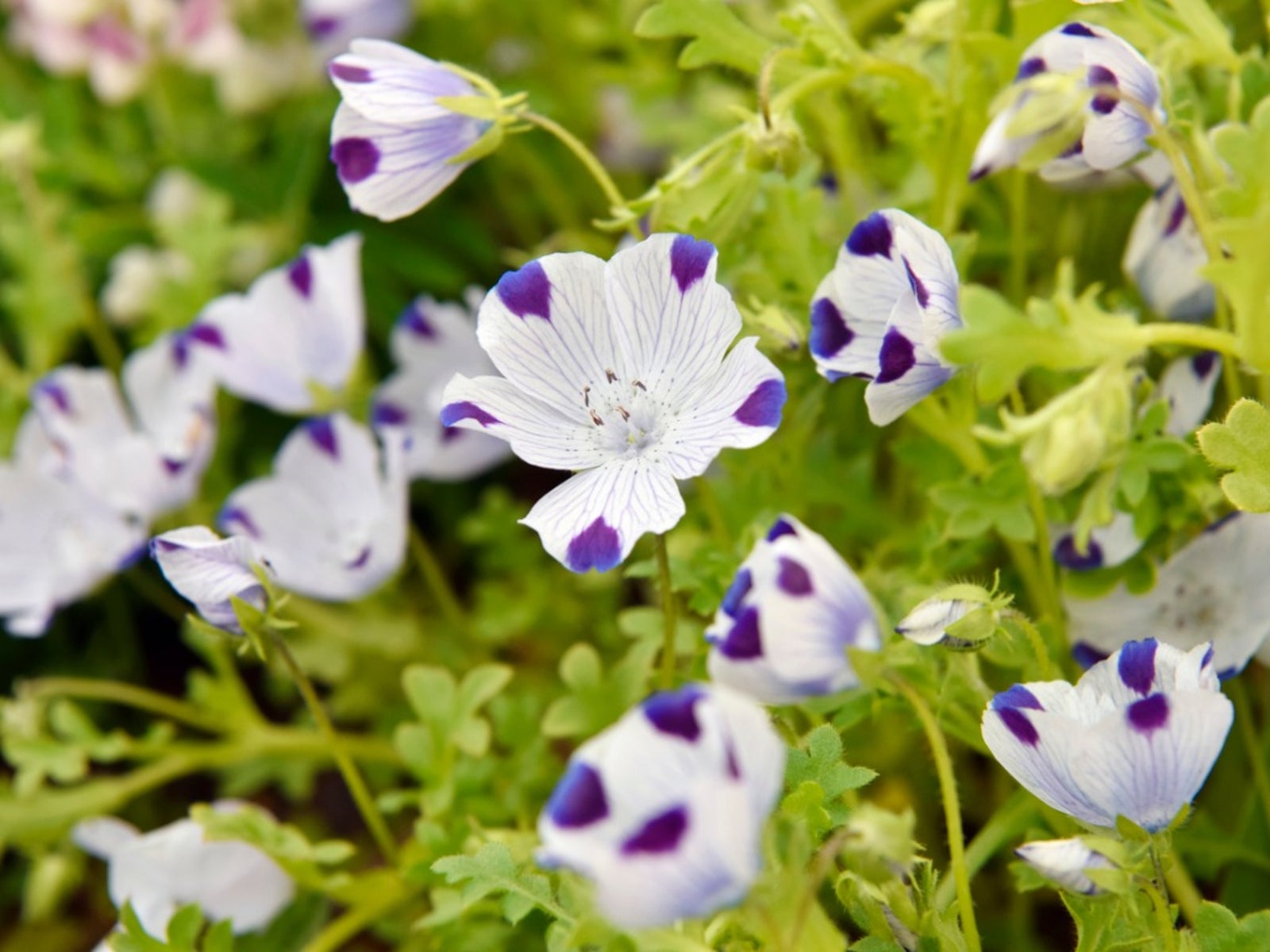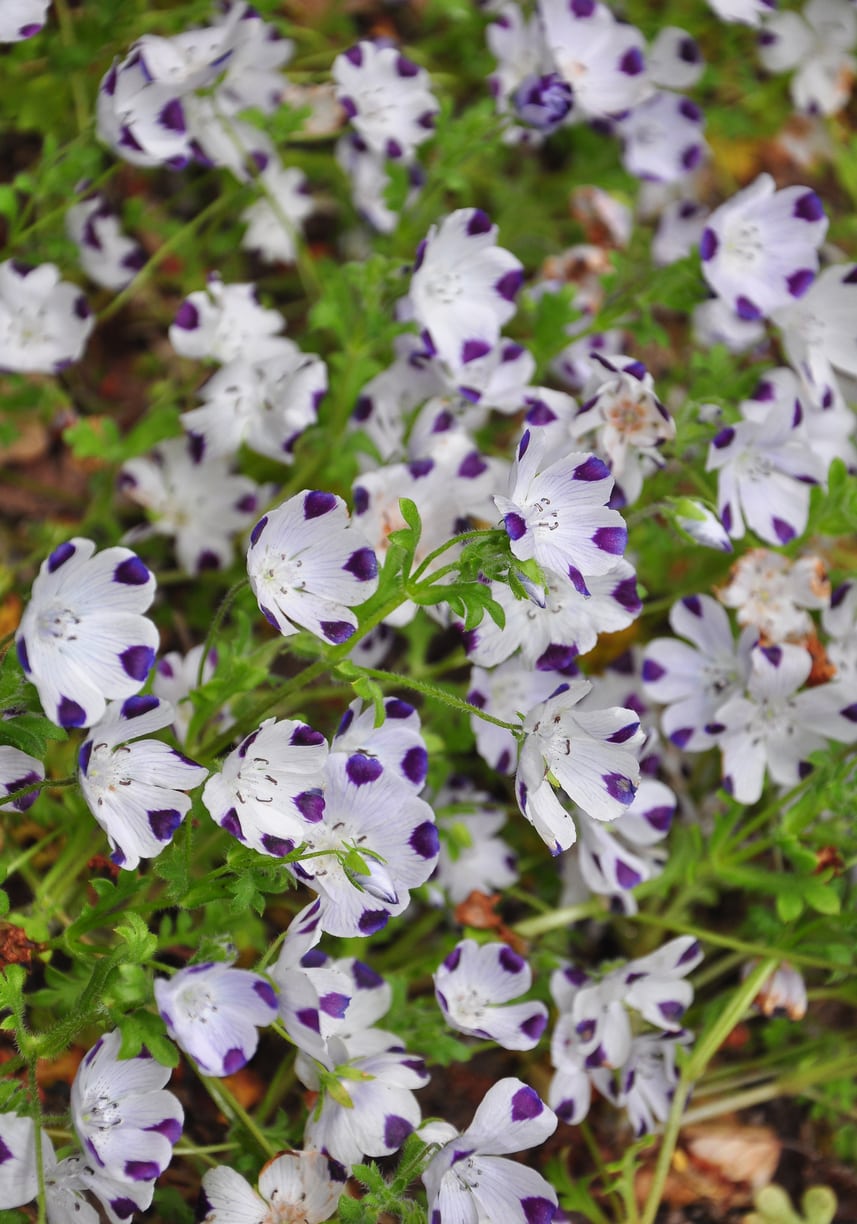Five Spot Plant Info – Tips For Growing Five Spot Plants


Five spot wildflowers (Nemophila maculata) are attractive, low-maintenance annuals. Native to California, they can be grown virtually anywhere in the United States and in areas with similar climates. They are prized both for their prolific, striking flowers and their soft, fern-like foliage. Keep reading to learn more about growing five spot plants.
Five Spot Plant Info
Five spot wildflowers are named for their distinct flowers: 1 inch wide (2.5 cm) light blue or white blossoms of five petals, each of which is tipped with a vivid, deep purple spot. They are reasonably compact - they grow to no more than 12 inches (30.5 cm) high and 8 inches (20.5 cm) wide and do not spread over the course of the summer. They prefer cool climates, germinating best in soil temperatures of 55-65 F. (13-18 C.). If your summers are particularly hot, don’t be discouraged. They should be able to survive if given lots of shade. They are annuals, and they’ll die back with the first frost. If allowed to flower and die back, however, they ought to seed naturally, and new plants should appear in the same spot the following spring. They bloom consistently and impressively all spring long.
Tips for Growing Five Spot Plants
Learning how to grow five spot flowers is exceptionally easy, as is their care. Because of their compact size and vigorous blossoming, five spot wildflowers are perfect for hanging baskets. A handful of seeds should ensure a great display through the spring. They also grow flawlessly in the ground, however. They’ll tolerate most types of soil with full sun to dappled shade. They do not transplant well, so direct sowing is recommended. Early in the spring, as temperatures are warming, sprinkle the seeds over the bare ground and then rake lightly to mix them with the soil. After this, they need essentially no care, apart from regular watering.
Gardening tips, videos, info and more delivered right to your inbox!
Sign up for the Gardening Know How newsletter today and receive a free copy of our e-book "How to Grow Delicious Tomatoes".

The only child of a horticulturist and an English teacher, Liz Baessler was destined to become a gardening editor. She has been with Gardening Know how since 2015, and a Senior Editor since 2020. She holds a BA in English from Brandeis University and an MA in English from the University of Geneva, Switzerland. After years of gardening in containers and community garden plots, she finally has a backyard of her own, which she is systematically filling with vegetables and flowers.
-
 ‘Coral Charm’ Peony Care For Sublime Semi-Double Peonies With Lush Salmon Pink Flowers
‘Coral Charm’ Peony Care For Sublime Semi-Double Peonies With Lush Salmon Pink FlowersPeonies are known for their soft baby pink or magenta tones, but if plushy coral blooms are your thing, here’s our guide to the ultimate ‘Coral Charm’ peony care
By Tonya Barnett
-
 How To Grow Seeds Quickly: 8 Expert Tricks For Fast Flowers & Crops
How To Grow Seeds Quickly: 8 Expert Tricks For Fast Flowers & CropsIt's never too late to start growing! Jump-start your flower or vegetable garden with these pro tips and tricks for germinating seeds in record time.
By Amy Grant
